Understanding the climate considerations for outdoor cannabis cultivation is important to ensure optimal growth and yield. The climate plays a significant role in the overall health and development of cannabis plants, affecting factors such as temperature, humidity levels, and exposure to extreme weather events. By gaining a deeper understanding of how climate impacts cannabis growth, you can implement strategies to protect your plants and maximize their yield and quality.
When it comes to outdoor cannabis cultivation, temperature and humidity levels are key factors to consider. Cannabis plants thrive in specific temperature ranges, typically between 70-85°F (21-29°C) during the day and 50-70°F (10-21°C) at night. Maintaining these ideal temperature conditions promotes healthy growth, flowering, and resin production.
Additionally, humidity levels help in cannabis cultivation. While cannabis plants prefer a humidity range of 40-60%, it is essential to monitor and adjust humidity levels based on the plant’s stage of growth. High humidity can lead to mold and mildew issues, while low humidity can cause dehydration and hinder nutrient absorption.
Key Takeaways
- Temperature and humidity levels are key factors in outdoor cannabis cultivation.
- Maintaining optimal temperature and humidity levels is important for maximizing plant health and yield.
- Dealing with extreme weather events requires preparation and strategies to mitigate damage.
- Adapt cultivation techniques based on climate conditions, such as using shade structures and drip irrigation in hot and dry climates, and providing proper ventilation and airflow in cool and humid climates.
The Impact of Climate on Cannabis Growth
The climate plays an important role in determining the success or failure of your cannabis cultivation venture. It directly affects various aspects of plant growth, such as flowering, resin production, and overall yield.
Temperature is one of the primary climate factors that can greatly influence the growth of your cannabis plants. Different strains have different temperature preferences, but in general, cannabis plants thrive in temperatures between 68-77°F (20-25°C) during the vegetative stage and slightly cooler temperatures of 64-75°F (18-24°C) during the flowering stage. Extreme temperatures, whether too hot or too cold, can stunt plant growth, reduce resin production, and even lead to plant death.
Another important climate consideration is the amount of sunlight your cannabis plants receive. Cannabis is a photoperiodic plant, meaning its growth and flowering are influenced by the duration of light and darkness it receives. For outdoor cultivation, it’s important to choose a location that receives ample sunlight throughout the day. Generally, cannabis plants require at least 6-8 hours of direct sunlight to thrive. Insufficient sunlight can lead to stretched, weak plants with lower yields.
Ideal Temperature and Humidity Levels for Outdoor Cultivation
Optimal temperature and humidity levels play a vital role in creating the perfect conditions for growing cannabis outdoors. Maintaining the right temperature and humidity can significantly impact the growth and overall health of your plants. Here are some important factors to consider:
- Temperature: Cannabis plants thrive in temperatures between 70°F and 85°F (21°C and 29°C) during the day. Cooler temperatures can slow down growth, while hotter temperatures can cause stress and damage to the plants. It’s important to monitor the temperature closely and provide shade or ventilation if necessary.
- Humidity: The ideal humidity range for outdoor cannabis cultivation is between 40% and 60%. High humidity levels can increase the risk of mold and mildew, while low humidity can lead to dehydration and stunted growth. Using techniques like pruning and proper spacing between plants can help improve air circulation and control humidity levels.
- Nighttime Temperature Drop: A significant drop in temperature during the nighttime can stimulate the production of essential oils and terpenes in cannabis plants. This drop, commonly referred to as the “diurnal temperature swing,” is beneficial for the flavor and potency of the final product. Aim for a temperature drop of around 10°F (6°C) during the night.
- Microclimates: Different areas within your cultivation site may have slightly different temperature and humidity conditions. It’s important to understand the microclimates in your outdoor growing area and adjust your cultivation practices accordingly. Monitor temperature and humidity levels in different areas to identify any variations and make necessary adjustments.
- Seasonal Changes: Temperature and humidity levels can vary significantly throughout the different seasons. It’s important to plan and adapt your cultivation practices accordingly. Consider using techniques like greenhouse cultivation or season extension techniques to create a more controlled environment and extend the growing season.
Dealing with Extreme Weather Events
When dealing with extreme weather events, you need to be prepared for the unexpected. Did you know that according to a study, over 80% of outdoor cannabis cultivators have experienced crop damage due to extreme weather conditions? This highlights the importance of having strategies in place to mitigate the impact of such events on your cannabis cultivation.
One of the key ways to deal with extreme weather events is to have a well-designed infrastructure that can withstand harsh conditions. This includes having sturdy structures such as greenhouses or hoop houses that can provide protection from strong winds, heavy rains, and hail.
Another important aspect of dealing with extreme weather events is having a contingency plan in place. This involves having backup resources such as generators to ensure power supply during power outages, as well as having alternative water sources in case of water scarcity.
It is also important to regularly monitor weather forecasts and have a communication plan in place to alert workers and take necessary actions in case of severe weather warnings.
By being prepared and having a well-thought-out plan, you can minimize the damage caused by extreme weather events and protect your outdoor cannabis cultivation. Being proactive and taking necessary precautions can make a significant difference in ensuring a successful and resilient harvest.
Strategies for Protecting Cannabis Plants from Climate-related Challenges
One effective way to shield your cannabis plants from climate-related challenges is by implementing protective strategies. These strategies can help mitigate the impact of extreme weather events and ensure the health and productivity of your plants.
Here are some strategies you can consider:
- Mulching: Applying a layer of organic mulch around the base of your plants can help regulate soil temperature and moisture levels. Mulch acts as a protective barrier, reducing evaporation and preventing weeds from competing with your cannabis plants for nutrients and water.
- Using shade cloth: Installing shade cloth over your cannabis plants can provide protection from excessive heat and sunlight. Shade cloth can help to reduce the risk of sunburn and heat stress, which can negatively impact plant growth and yield. Make sure to choose a shade cloth with the appropriate level of shading for your specific climate and the needs of your plants.
- Implementing windbreaks: Strong winds can damage cannabis plants, causing them to break or become dehydrated. Planting windbreaks, such as shrubs or trees, around your cultivation area can help create a barrier that deflects or reduces the impact of wind. This can help protect your plants and create a more favorable microclimate for their growth.
Maximizing Yield and Quality in Different Climate Conditions
For example, if you’re growing in a hot and dry climate, implementing shade structures and using drip irrigation can help regulate temperature and conserve water, ultimately promoting healthier plant growth. Shade structures provide protection from excessive sunlight, preventing your cannabis plants from experiencing heat stress and potential damage. By creating a shaded environment, you can maintain more optimal temperatures for your plants, allowing them to thrive even in the face of scorching heat.
Additionally, drip irrigation systems deliver water directly to the roots of your plants, reducing water loss through evaporation and ensuring that your plants receive a consistent water supply. This method helps prevent overwatering and underwatering, both of which can negatively impact the yield and quality of your cannabis crop. By carefully managing the water supply and temperature in a hot and dry climate, you can enhance the overall health and productivity of your cannabis plants.
In contrast, if you’re growing in a cool and humid climate, it’s important to take different measures to maximize your yield and quality. In this climate, mold and mildew can be significant challenges, so it’s paramount to provide proper ventilation and airflow to prevent the buildup of excess moisture. Consider using fans or other ventilation systems to circulate air around your plants and reduce the risk of fungal infections.
Additionally, selecting cannabis strains that are more resistant to mold and mildew can also help mitigate these climate-related challenges. By choosing varieties that are known for their resistance to moisture-related issues, you can increase the likelihood of a successful harvest. Furthermore, monitoring humidity levels and adjusting watering practices accordingly can also contribute to better yield and quality in a cool and humid climate.
By understanding and addressing the specific needs of your cannabis plants in different climate conditions, you can optimize their growth and ultimately achieve the best possible results.
Frequently Asked Questions
How does climate affect the potency and cannabinoid profile of cannabis plants?
Climate plays a key role in determining the potency and cannabinoid profile of cannabis plants. Factors like temperature, humidity, and sunlight affect the plant’s growth, resin production, and the levels of THC, CBD, and other cannabinoids.
Can outdoor cultivation be successful in regions with unpredictable weather patterns?
Yes, outdoor cultivation can still be successful in regions with unpredictable weather patterns. Though it may require more planning and protective measures, such as greenhouses or shelters, to ensure the plants are not negatively impacted by sudden changes in weather.
What are some common signs of stress in cannabis plants due to climate conditions?
Some common signs of stress in cannabis plants due to climate conditions include wilting, yellowing or browning leaves, stunted growth, and increased susceptibility to pests and diseases. These signs indicate the need for adjustments in cultivation practices.
Are there any specific strategies to mitigate the impact of humidity on cannabis plants?
To mitigate the impact of humidity on cannabis plants, you can use a figure of speech: u0026quot;Don’t let humidity rain on your cannabis parade!u0026quot; Strategies include proper ventilation, using dehumidifiers, and selecting strains that are more resistant to high humidity.
How does temperature and humidity impact the flowering period of cannabis plants in different climate conditions?
Temperature and humidity greatly influence the flowering period of cannabis plants. In cooler climates, low temperature and high humidity can delay flowering, while in warmer climates, high temperature and low humidity can accelerate flowering.

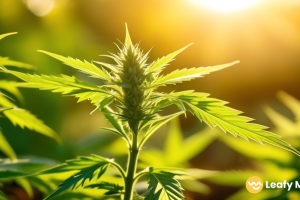
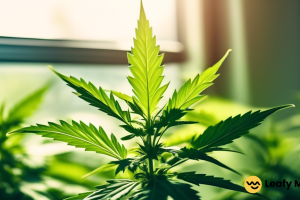
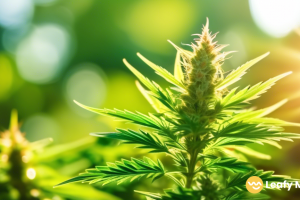




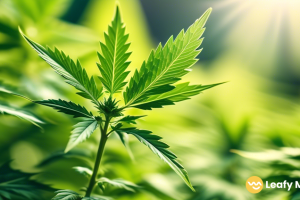
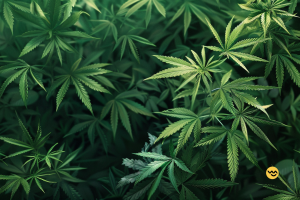
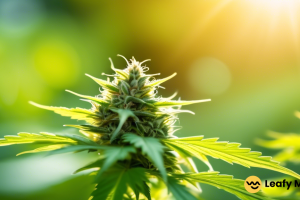
Leave a Reply